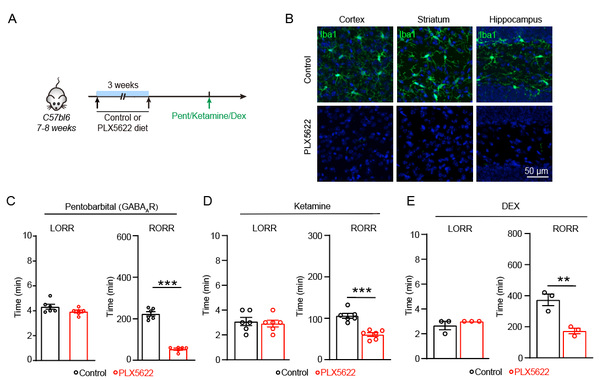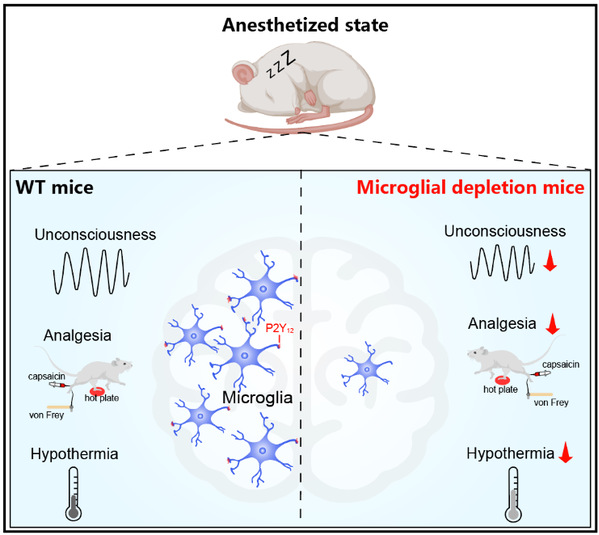On May 10, the research team led by Prof. GAO Zhihua at the Zhejiang University School of Brain Science and Brain Medicine published an open-access article titled “Microglia modulate general anesthesia through P2Y12 receptor” in the journal Current Biology. It is the first time that scientists have uncovered the function of microglia in regulating general anesthesia via the P2Y12 receptor.
General anesthesia, which can induce reversible unconsciousness, is extensively used in modern surgeries and related medical checkups. Although it has been in use for 170 years, its neurobiological mechanisms are still not fully understood. It is known that anesthetic drugs act on neurons to induce the overall suppression of neuronal activity in brain, such as GABAA, NMDA, and β2A receptors. Therefore, studies on the mechanisms related to anesthesia have been primarily focused on neurons.
Microglia are the main immune and homeostatic regulatory cells in the brain, which play crucial neuro-modulatory roles in addition to immune response functions. Recent studies have revealed that general anesthesia also substantially enhances the dynamics of microglia, with increased process motility and territory surveillance. However, whether microglia are actively involved in general anesthesia modulation remains obscure.
Prof. GAO Zhihua et al. administered an inhibitor of the colony stimulating factor-1 receptor (CSF1R) to remove microglia from the brain and found that mice deprived of microglia awakened earlier from anesthesia (Fig. 1). EEG recordings and righting reflex analysis revealed that mice deprived of microglia were less sensitive to general anesthetics, as evidenced by the reduced depth of anesthesia and earlier awakening (Fig 1).

Fig. 1: Microglial depletion accelerated emergence from pentobarbital-induced general anesthesia
In addition to unconsciousness, general anesthesia also triggers analgesia and hypothermia. The researchers conducted analgesic experiments using low-dose ketamine and found that microglia depletion significantly attenuated the analgesic effect of low-dose ketamine and alleviated hypothermia induced by general anesthesia (Fig 2).

Fig. 2: Microglial depletion weakened anesthetic-induced analgesia and hypothermia
Through pharmacological blockade and gene knockdown, the researchers found that the P2Y12 receptor specifically expressed by microglia was a key target of microglia in regulating anesthesia, and that blocking or knocking down the P2Y12 receptor also significantly reduced the sensitivity of mice to anesthesia and its duration.

Fig. 3: Graphical abstract
This study presents the first line of evidence that microglia participate actively in the multiple processes of general anesthesia through P2Y12 receptor-mediated signaling and expands the non-immune role of microglia in the brain, thus having important clinical implications (Fig. 3).
More information: Prof. GAO Zhihua and Duan Shumin,CAS fellow, from the School of Brain Science and Brain Medicine, are the corresponding authors of this paper. Dr. CAO Kelei and Dr. QIU Liyao from the MOE Frontier Science Center for Brain Science and Brain-Machine Integration, Zhejiang University, are the co-first authors.